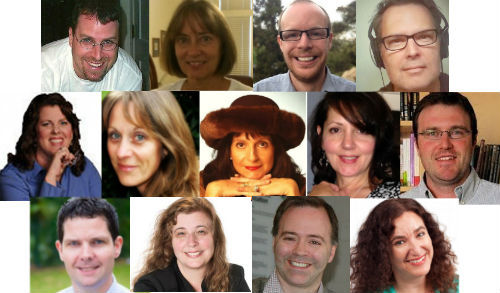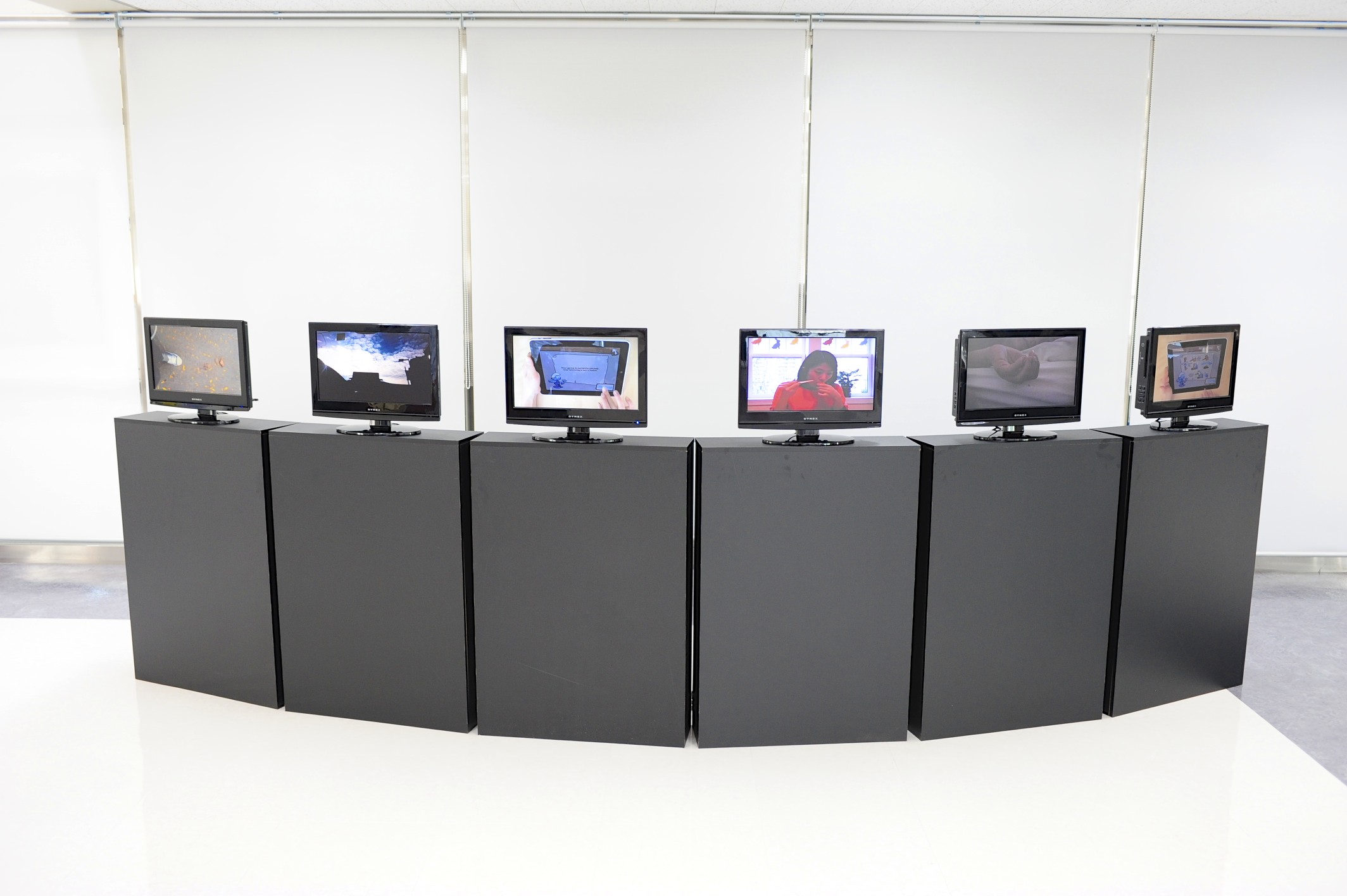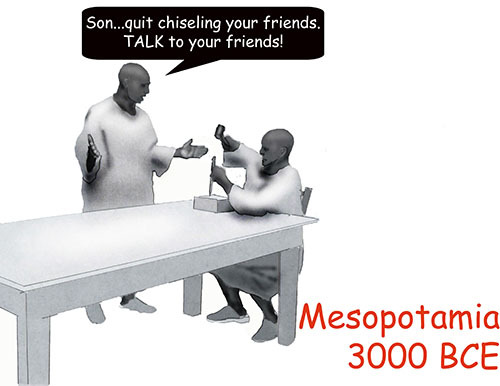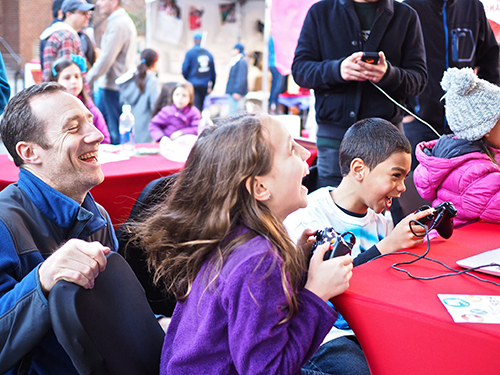
As you will learn from the insightful articles shared by our Top 12 Global Teacher team this month, global literacy starts with educators and parents being curious and interested in learning about the world around them and how it works. Only then can we begin to create truly dynamic educational responses for learning.
This month we posed this question to our teachers: What are the Best Ways for Teachers to Engage Their Classrooms in a Global Conversation?
Here are their answers:
Global literacy is not a “choice” or an add-on,” says Silvia Tolisano (@langwitches); it’s “part of BEING literate today.” The teacher must be “connected” and “engaged.” Silvia shares a great list of ways to engage students in global conversations, including taking advantage of one’s own personal connections, utilizing digital tool and amplifying traditional ones. We also enjoyed her great ideas for global projects teachers can organize on their own. Read More.
“Children and teens are communicating with people all over the world using skills that 99% of adults cannot comprehend,” says Todd Finley (@finleyt). Todd introduces us to some of the young creators driving global conversations – “Take a look, it’s being livestreamed!” Read More.
How is New Zealand Connecting Young Learners? Don’t miss Richard Wells’ (@iPadWells) new book on NZ’s education system due out in 2016, but in the meantime check out his blog on global conversations and the national initiative, #KidsEdChat, which has introduced thousands of children from 5 and up “to a world of online connections and the learning and impact those connections bring about.” Read More.
“Imagine only reading books from one bookshelf, when you have an entire library of great books to read.” Karen Lirenman (@KLirenman) strongly believes that teachers should be involved in global conversations before they expect it of their students. So let Karen help you get started. Read More.
“Spectacular global conversations materialize when students embrace diverse and sometimes, to American students at least, exotic paradigms.” Check out guest blogger James Sturtevant’s (@jamessturtevant) terrific classroom projects that were “instrumental in fostering profound discourse this semester.” Read More.
Craig Kemp’s (@mrkempnz) students come from international backgrounds and, explains Craig, are living in a country that is not “home”. What makes learning “global” for his students? It’s all about engagement. So what are Craig’s top 5 ways for engaging students in a global conversation? Read More.
Guest blogger Beth Holland (@brholland) may have a New Year’s resolution idea for teachers – “Join a Twitter Chat, hop into a Google+ Community, or subscribe to a LinkedIn Group.” Get engaged in the global conversations, emphasizes Beth, who shares wonderful examples from all around the world. Read More.
“We’re building the bridges today that tomorrow will walk across,” says Vicki Davis(@coolcatteacher), and “the best way to engage the classroom in a global conversation is to help the conversations become part of the classroom.” Check out Vicki’s “3 Simple Steps to Help Students Become a Global Citizen.” Read More.
Tom Bennett (@tombennett71), Joe Bower (@joe_bower), Susan Bowles (@FloridaKteacher), Lisa Currie (@RippleKindness), Vicki Davis, Todd Finley, Pauline Hawkins (@PaulineDHawkins), Craig Kemp, Karen Lirenman, Adam Steiner (@steineredtech), Silvia Tolisano and Richard Wells are The Global Search for Education 2014 Top 12 Global Teacher Bloggers.
(Photo is courtesy of iofoto/ Shutterstock.com)


Join me and globally renowned thought leaders including Sir Michael Barber (UK), Dr. Michael Block (U.S.), Dr. Leon Botstein (U.S.), Professor Clay Christensen (U.S.), Dr. Linda Darling-Hammond (U.S.), Dr. MadhavChavan (India), Professor Michael Fullan (Canada), Professor Howard Gardner (U.S.), Professor Andy Hargreaves (U.S.), Professor Yvonne Hellman (The Netherlands), Professor Kristin Helstad (Norway), Jean Hendrickson (U.S.), Professor Rose Hipkins (New Zealand), Professor Cornelia Hoogland (Canada), Honourable Jeff Johnson (Canada), Mme. Chantal Kaufmann (Belgium), Dr. EijaKauppinen (Finland), State Secretary TapioKosunen (Finland), Professor Dominique Lafontaine (Belgium), Professor Hugh Lauder (UK), Lord Ken Macdonald (UK), Professor Geoff Masters (Australia), Professor Barry McGaw (Australia), Shiv Nadar (India), Professor R. Natarajan (India), Dr. Pak Tee Ng (Singapore), Dr. Denise Pope (US), Sridhar Rajagopalan (India), Dr. Diane Ravitch (U.S.), Richard Wilson Riley (U.S.), Sir Ken Robinson (UK), Professor Pasi Sahlberg (Finland), Professor Manabu Sato (Japan), Andreas Schleicher (PISA, OECD), Dr. Anthony Seldon (UK), Dr. David Shaffer (U.S.), Dr. Kirsten Sivesind (Norway), Chancellor Stephen Spahn (U.S.), Yves Theze (LyceeFrancais U.S.), Professor Charles Ungerleider (Canada), Professor Tony Wagner (U.S.), Sir David Watson (UK), Professor Dylan Wiliam (UK), Dr. Mark Wormald (UK), Professor Theo Wubbels (The Netherlands), Professor Michael Young (UK), and Professor Minxuan Zhang (China) as they explore the big picture education questions that all nations face today.
The Global Search for Education Community Page
C. M. Rubin is the author of two widely read online series for which she received a 2011 Upton Sinclair award, “The Global Search for Education” and “How Will We Read?” She is also the author of three bestselling books, including The Real Alice in Wonderland, is the publisher of CMRubinWorld, and is a Disruptor Foundation Fellow.
Follow C. M. Rubin on Twitter: www.twitter.com/@cmrubinworld





Recent Comments